Graham Reid | | 7 min read
I Want You (She's So Heavy) from the sessions disc
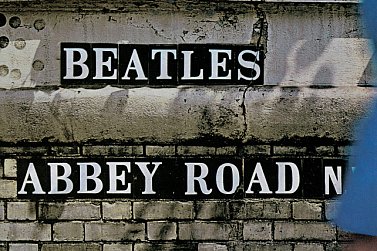
Giles Martin – son of the Beatles' original producer George and the man who has been given the mandate to remix albums from the Beatles' later catalogue for reissue – acknowledges that his work on the new Abbey Road reissue is different from what was required on Sgt Pepper and The White Album.
With the eight-track mixing desk and better technology available for the sessions, many consider Abbey Road of 1969 to be the best produced album in the Beatles' catalogue.
It was certainly the one Martin's father had real affection for, especially after having been sidelined for the role of knocking together something from the mostly shambolic Let It Be/Get Back sessions of earlier in the year (but released after Abbey Road as a limp coda to a remarkable career).
For Giles Martin, Abbey Road – which was the first Beatles album mixed only in stereo – stands apart from Pepper for which he teased out elements and made the sonic palette more colourful and wider, and for The White Album (which had the advantage of the Escher demo sessions to add breadth) the pared-back material required some sharpening.
“With Pepper it was, 'How do you make it more immersive, psychedelic and colourful?' ” he told Mojo magazine recently.
“With The White Album it was, 'How do you make it more visceral?' With this one it's, 'How do you make it more hi-fi?'
“It's the Beatles most modern record.”
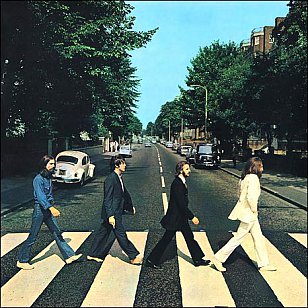 The Martin remix -- which he speaks about in the clip -- is subtle and certainly mostly unobtrusive. If his earlier remastering of the Beatles catalogue allowed Ringo Starr's inventive drumming to be better heard on Sgt Pepper and Abbey Road, that is slightly enhanced once more. As is McCartney's more inventive parts (listen to Come Together and I Want You on these new mixes.
The Martin remix -- which he speaks about in the clip -- is subtle and certainly mostly unobtrusive. If his earlier remastering of the Beatles catalogue allowed Ringo Starr's inventive drumming to be better heard on Sgt Pepper and Abbey Road, that is slightly enhanced once more. As is McCartney's more inventive parts (listen to Come Together and I Want You on these new mixes.
On the 90 second Golden Slumbers, his father's rich string section now appears as widescreen through double tracking (it had been limited to mono on the original album).
And on The End the three guitars of McCartney, Harrison and Lennon respectively in their solo are more sweepingly psychedelic rock and have more visceral presence.
Lennon's Come Together and I Want You (She's Ss Heavy) remain the two immediate go-to tracks to get a sense of the sheer strength and weight of his motivation (Yoko) at the time. Yet on the sessions disc it is the different mix of I Want You which is the most remarkable revelation (see below in this article).
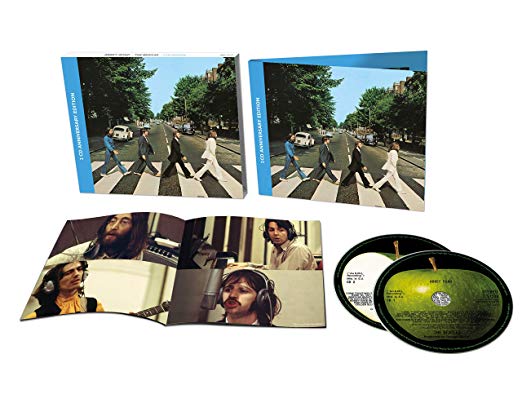 Most interest for Beatle aficionados will turn to that second disc in the double edition (other iterations are below) which offers other takes of the songs in the same running order.
Most interest for Beatle aficionados will turn to that second disc in the double edition (other iterations are below) which offers other takes of the songs in the same running order.
Come Together (take five) is a run through with a more impassioned vocal delivery by Lennon which stumbles to halt after three impressive minutes with Lennon joking “he got teenage lyrics, he's got hot rod boley [?]. . . I'm losing my cool.” This is the song McCartney recalls as being presented by Lennon in a much faster version and closer to Chuck Berry (from whom Lennon borrowed lyrics) but which he [McCartney) suggested slowing down and being more funky.
The track also reminds you of how exceptional Ringo's drumming was all across this album.
Something appears as a studio demo, a Martin remix of the Harrison solo session on his 26thbirthday in February '69 where he also demoed Old Brown Shoe and All Things Must Pass. An earlier version of this – just guitar and vocal – appeared on the Anthology 3 volumes, but this one has a very tender and confident vocal by Harrison with him on guitar and piano overdub. His improvised part “you know I love that woman, and I need her all the time . . .” gives the lie to his later assertion that the songs was about God.
McCartney's Maxwell Silver Hammer follows – surely the most jaunty song ever about a serial killer – and was a track the other Beatles disliked for the dozens of takes he insisted on. Lennon pointedly dismissed it later. This is take 12 but musically it is barely different from the finished version (aside from McCartney's scat and nonsense singing) remains and irritating lightweight piece. Interestingly though there is some humourous exchange at the end about it between McCartney and an off-mike Lennon: McCartney saying there were good bits and . . . Lennon saying “bad bits” and they laugh.
Better is the early of his Fifties-style screamer Oh! Darling which follows and features them playing it live with Billy Preston on organ. McCartney has to strain at the top of his range (and misses his targets) but this is one of those welcome takes where you can hear the Beatles at work on a song they all enjoyed making.
They also had fun on Ringo's Octopus' Garden, again playing together live as the tape ran. Impressive are Harrison's filagrees of guitar interpolations, and when Ringo screws up they stumble to a halt and he admits “I went into 'ask my friends' earlier . . . or you all came late”.
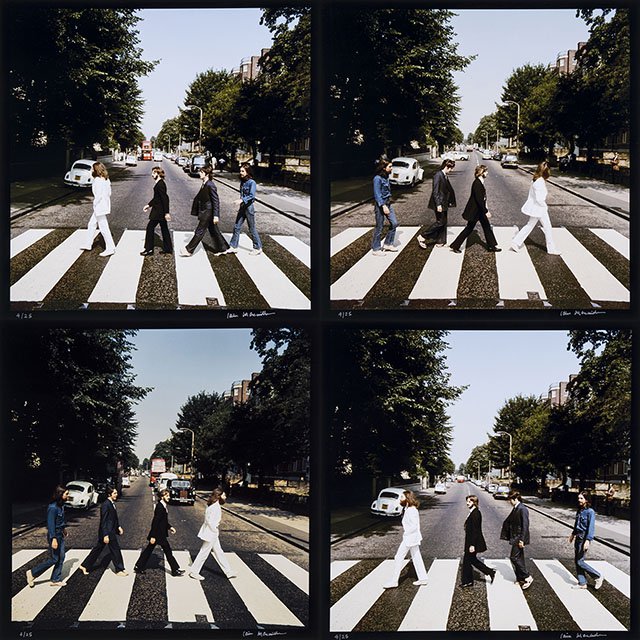 The edited together I Want You (She's So Heavy) is terrific. The band are asked if they can turn it down because people outside have complained (“What are they doing here at this time of night?” asks Lennon) and then this is “the last chance to be loud”. And away they go with Lennon in throat-searing mode and this version edited together from previous takes. But absent is the polar blast of white noise which was layered over the final version later.
The edited together I Want You (She's So Heavy) is terrific. The band are asked if they can turn it down because people outside have complained (“What are they doing here at this time of night?” asks Lennon) and then this is “the last chance to be loud”. And away they go with Lennon in throat-searing mode and this version edited together from previous takes. But absent is the polar blast of white noise which was layered over the final version later.
Instead we get to hear Billy Preston's tumultuous organ part which is thrilling and terrifying in its intense claustrophobia. You are glad mad Charlie Manson wasn't on the streets at the time, there's no telling what this might have inspired in him.
A real standout and seven dense minutes.
An early take of Here Comes the Sun follows as a welcome shaft of light and again Harrison is in confident voice. Lennon absent again.
The first take of Because (which later boasted remarkable harmony singing) is simply the instrumental backing track with McCartney on bass, Lennon on guitar and producer George Martin on electric harpsichord. It is elegant and you can hear Ringo clapping on the beat in those days before drum machines.
“How was it?” asks Lennon at the end.
Nonsense talking and ad libs start take 36 of You Never Give Me Your Money with McCartney on piano, Harrison playing the big bass guitar part and Lennon entering on guitar after the intro. You'd love to hear that guitar part, complex and glimmering, singled out. It is quite something, as his part towards the end.
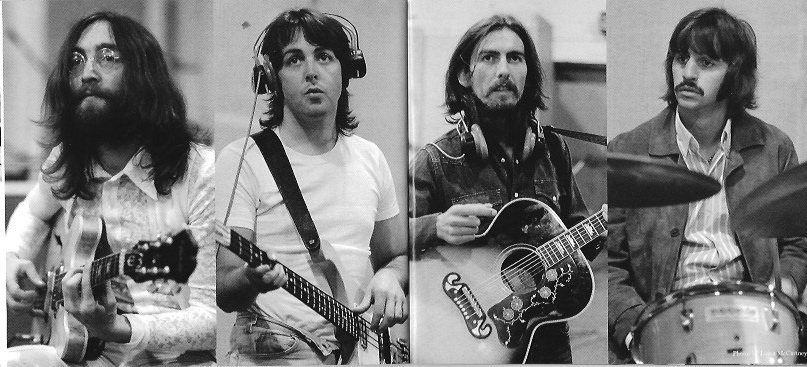 Sun King/Mean Mr Mustard – Lennon songs from each end of his broad spectrum – follow and if on the finished album there was the impression that these were edits from two separate sessions they were in fact recorded of a piece. Here we get the instrumental backing for Sun King (a mood they openly acknowledge they copped from Fleetwood Mac's recent chart-topper Albatross) and the sudden drop into the tough Mean Mr Mustard with a loose vocal by Lennon (sister Pam which linked it with Polythene Pam in a later take is here Shirley).
Sun King/Mean Mr Mustard – Lennon songs from each end of his broad spectrum – follow and if on the finished album there was the impression that these were edits from two separate sessions they were in fact recorded of a piece. Here we get the instrumental backing for Sun King (a mood they openly acknowledge they copped from Fleetwood Mac's recent chart-topper Albatross) and the sudden drop into the tough Mean Mr Mustard with a loose vocal by Lennon (sister Pam which linked it with Polythene Pam in a later take is here Shirley).
Lennon's Polythene Pam follows with Ringo hammering away and Lennon quipping that it sounds like Dave Clark, and in reference to the opening chords “It's like being Tommy in here”. The Who's Tommy had been released weeks before.
This is a rough run through (Ringo became more subtle on subsequent takes) and segues into McCartney's She Came in Through the Bathroom. Again both songs recorded as a single piece, the first time that Lennon and McCartney had done two of their individual songs together in that way.
The first takes McCartney's Golden Slumbers (lyrics lifted from a lullaby by Thomas Dekker c1572-1632) and Carry That Weight follow but break down.
The End is an very accomplished early take with Lennon off-mike shouting “Okay, let's hit it”: Ringo gets his only solo but the three guitar parts are absent (they sound remarkable in the remix on the first disc) and then . . . three takes of Her Majesty.
So what does this extra disc tell us of these sessions? That there was better humour evident and sense of collective determination which had been absent in the sessions earlier in the year.
That despite being very different people and musicians at this point when you put those four musicians in a studio and had them playing live they were as Lennon once said “a great little rock'n'roll band”.
That the final album might have seemed polished, but at core there was also experimental music here (Come Together, I Want You), intelligent retro music (Oh! Darling, Mean Mr Mustard and Polythene Pam), a subtle shift towards an art music (Because, Sun King), sophisticated songwriting (Something) and folk (Here Comes the Sun).
Oh and a novelty song for the kids (Octopus' Garden).
Even in their under-rehearsed state these songs stand up.
For many people they will be surplus to requirement, but this double CD shows how a band got from there to there, and they make it sound effortless.
In Part Three of this overview Elsewhere looks at the other sessions on the expanded Super Deluxe Edition of Abbey Road.
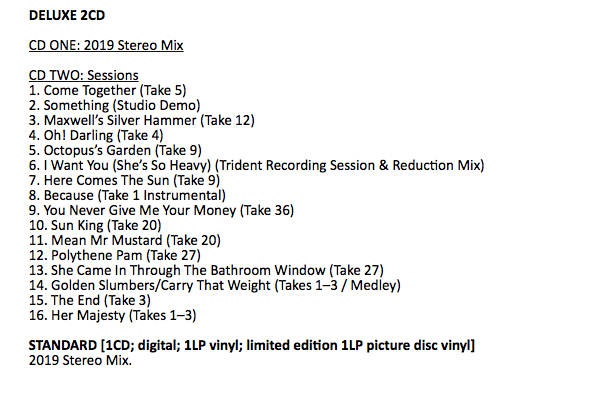

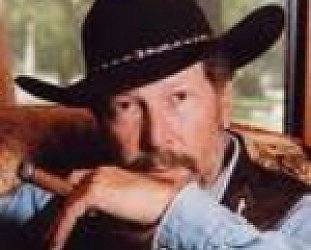
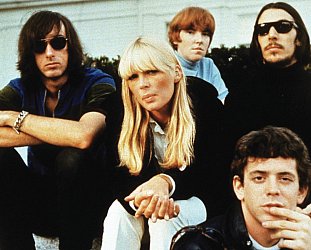
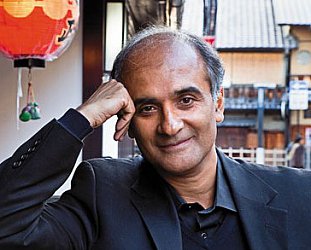
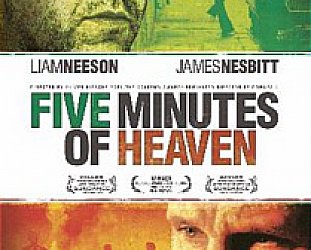
Peter - Oct 2, 2019
I enjoyed both Parts One and Two of the Abbey Road Remixes and especially the Elsewhere discourse accompanying Part Two; very informative.
SaveThe clip of The End highlighted some nifty drumming from Ringo. The clip of I Want You (She's So Heavy) revealed in the intro, a neighbour who was complaining about The Band playing too loud, too late at night: said Paul, "It's his own fault, he's got a house in a lousy district!"
In the interview with Giles Martin, I was impressed to hear him give fulsome credit to Sam Okell the engineer thus underlining what a collaborative venture it had been.
What a band they were; in my first year out of high school I can still remember travelling with three mates from Palmy down to Wellington (1964) in a borrowed family car to see them at the Town Hall. A life-long thrill.
post a comment